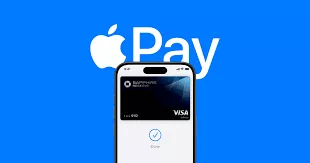In the realm of wearable technology, the Apple Watch stands as a beacon of innovation, seamlessly integrating advanced functionalities into our daily lives. In this article, we delve into the intricacies of Apple Pay, elucidating its functionality, device compatibility, connection requirements, and practical tips for optimized usage, especially in offline scenarios.
Understanding Apple Pay: Revolutionizing Contactless Payments
Apple Pay revolutionizes the way we make payments, offering a secure and convenient alternative to traditional methods. At its core, Apple Pay leverages Near Field Communication (NFC) technology to facilitate swift and secure transactions. By simply holding your Apple Watch or iPhone near a compatible payment terminal, you can authorize transactions with a touch or glance, eliminating the need for physical cards or cash.
A common misconception surrounding Apple Pay pertains to its connection requirements. Contrary to popular belief, Apple Pay primarily relies on NFC technology for transaction processing, rendering cellular data connectivity optional. While a cellular data connection can enhance the overall user experience by enabling real-time transaction updates and authentication, it is not a prerequisite for utilizing Apple Pay’s core functionality.
Device Compatibility: Seamless Integration Across Apple Ecosystem
Apple Pay extends its reach across various Apple devices, including iPhone, Apple Watches, and iPad. Each device offers native support for Apple Pay, ensuring a consistent and streamlined payment experience. Importantly, cellular service is not mandatory for Apple Pay functionality on any of these devices. Whether you’re using an iPhone with cellular capabilities or an Apple Watch paired with your iPhone, Apple Pay operates seamlessly, irrespective of cellular connectivity.
In scenarios where a cellular connection is unavailable, Apple Pay seamlessly transitions to alternative connection methods, such as WiFi or Bluetooth. These backup connections ensure continuity in service, allowing users to complete transactions without disruption. Moreover, Apple devices are designed to prioritize secure connections, mitigating potential security risks associated with public WiFi networks.
Limitations: Navigating Offline Scenarios
While Apple Pay functions seamlessly without cellular service, certain limitations warrant consideration. Without a data connection, users may experience delays in transaction updates and authentication processes. Additionally, some features, such as transaction history synchronization across devices, may require an active internet connection for seamless integration.
To optimize the offline usage of Apple Pay, users can adopt several strategies to ensure a smooth and hassle-free experience. Firstly, maintaining adequate battery power is paramount, as offline transactions heavily rely on device power. Additionally, users should proactively configure their devices for offline transactions, enabling features such as Express Transit Mode for effortless transit payments.
Conclusion
Apple Pay redefines the paradigm of contactless payments, offering a secure, convenient, and versatile solution for modern consumers. By leveraging NFC technology and embracing a diverse array of connection methods, Apple Pay transcends traditional boundaries, enabling seamless transactions anywhere, anytime. With the right knowledge and preparation, users can harness the full potential of Apple Pay, unlocking a world of possibilities at their

